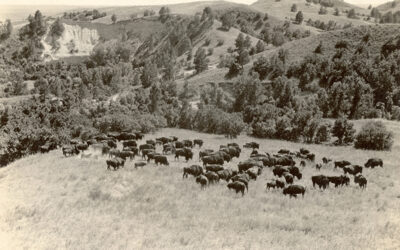Omaha in 1860 was only a shadow of what it would later become. Henry E. Palmer, a native of Wisconsin, crossed the Missouri River to Omaha on a steam ferry in March of 1860 and recorded his impressions of the fledgling city. Palmer’s arrival was not particularly auspicious. The ferry on which he arrived got stuck on a sandbar, and “there we remained until about 4:00 P.M.–no breakfast, no dinner, no lunch. No man ever first touched Nebraska soil with a better appetite than did I.”
Palmer soon located a friend in Omaha, James A. Maxwell, with whom he boarded for a short time while he saw the sights: “I remember the Herndon House, at the time the largest and best hotel in the Missouri valley from the head to the mouth of the river, until recently Union Pacific headquarters. I remember, too, that there were only three or four brick store buildings in Omaha, and if I am not mistaken, not more than that number of brick residences, all small. Nearly all the buildings were frame and generally one story. Only 1,600 people were there at that time; very few houses south of Harney, and I think, none west of 20th. The capitol building on the site of the present high school grounds [Omaha was the capital of Nebraska Territory] was the one conspicuous building of Omaha; it could be seen from the bluffs, beyond Council Bluffs, from the valley, and for miles around.
“J. Maxwell Clark [James Maxwell’s nephew] . . . and I climbed to the dome one Sunday, my first Sunday in Nebraska, and looked out upon the barren and almost trackless west. From a point west of 20th street I am sure I saw no houses save a ranch near the military bridge about 24th and Cuming streets. The old military road climbing the hill west to where the waterworks reservoir is, and on over the present route to Benson, was plainly visible. Not a house from 24th and Cuming streets to Elkhorn City, twenty-three miles west. There were only a few cottonwood trees along the creek spanned by the military bridge, a gulch or ravine that heads one fork about 34th and Poppleton, and one fork about 39th and Farnam. As far west as I could see there was no timber; only prairie, unbroken and unfenced; prairie covered with buffalo grass, a dry parched looking country. I venture to say that there are now more growing trees in the city limits of Omaha than there was in the entire county of Douglas in 1860, possibly in the entire state.”



